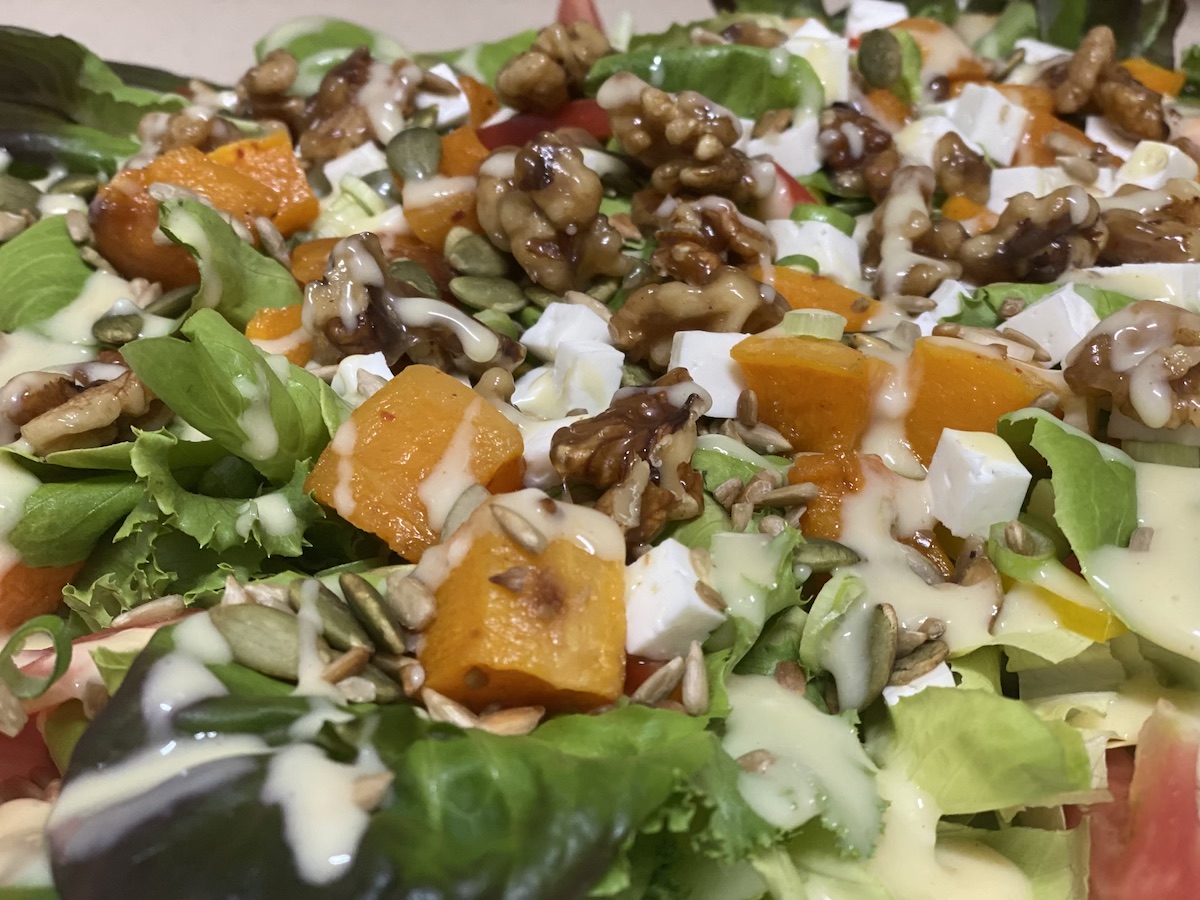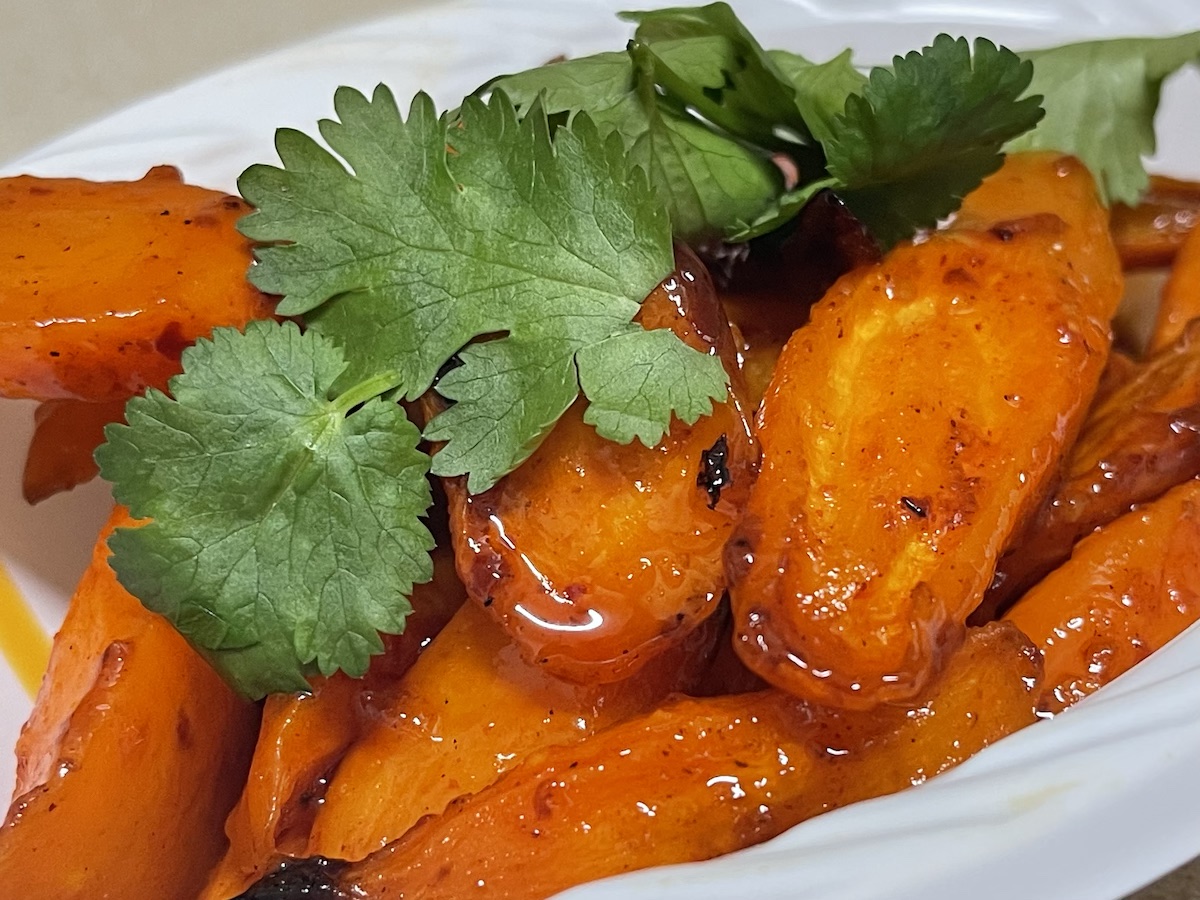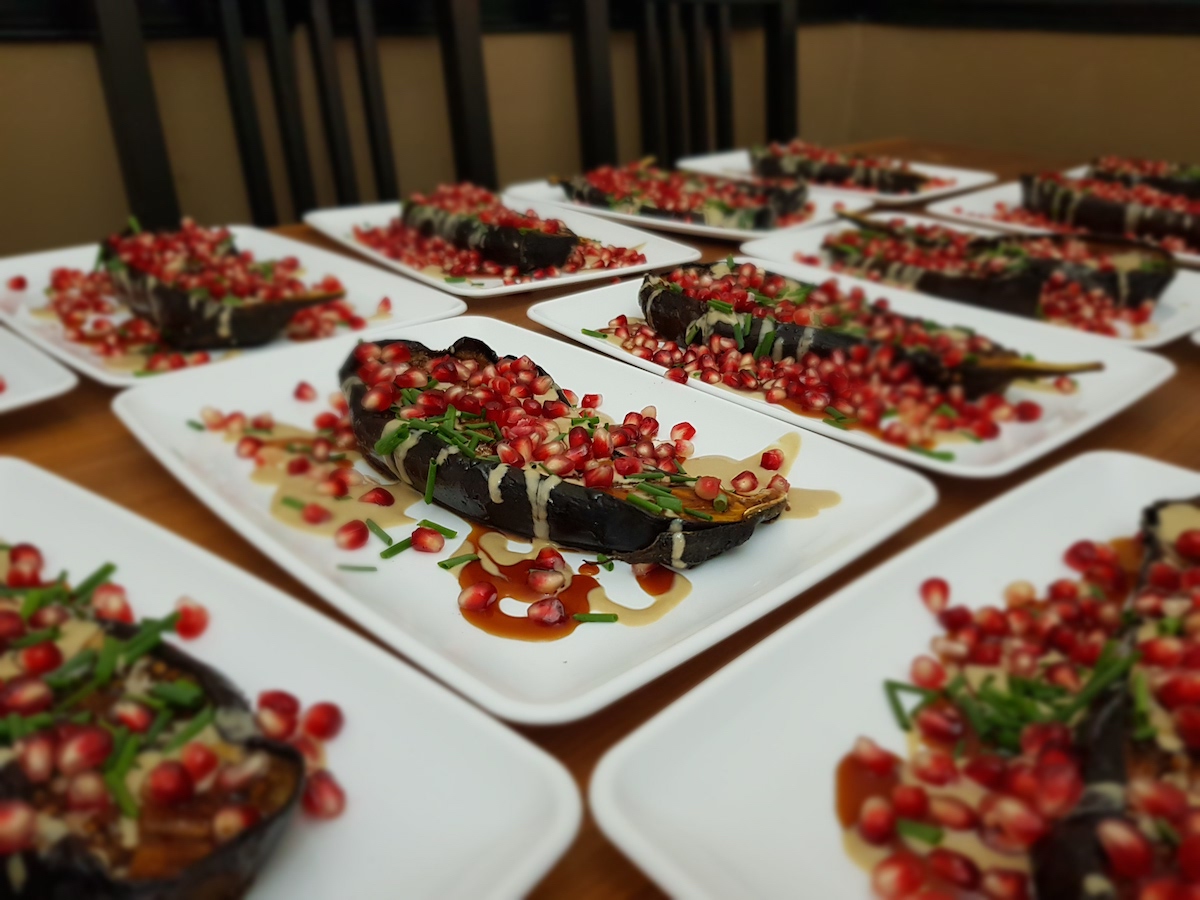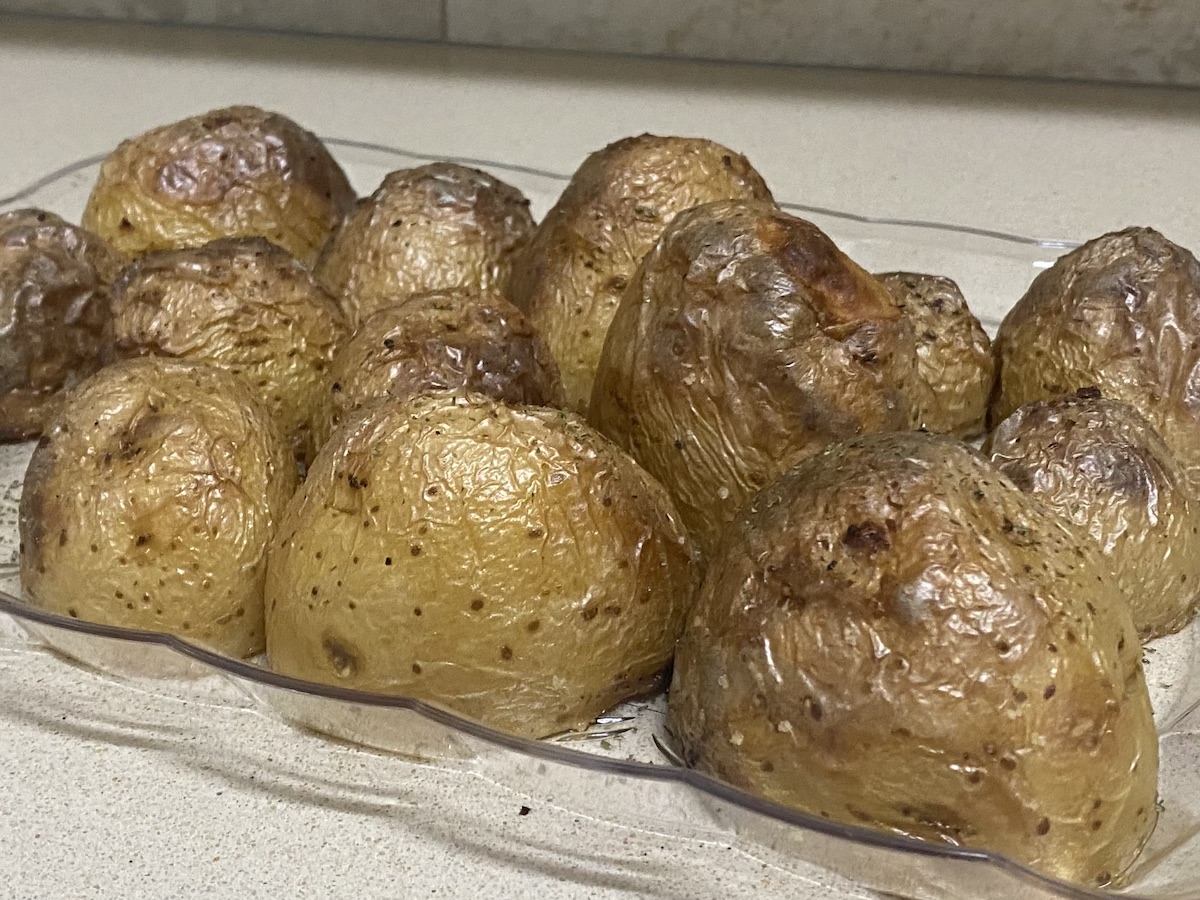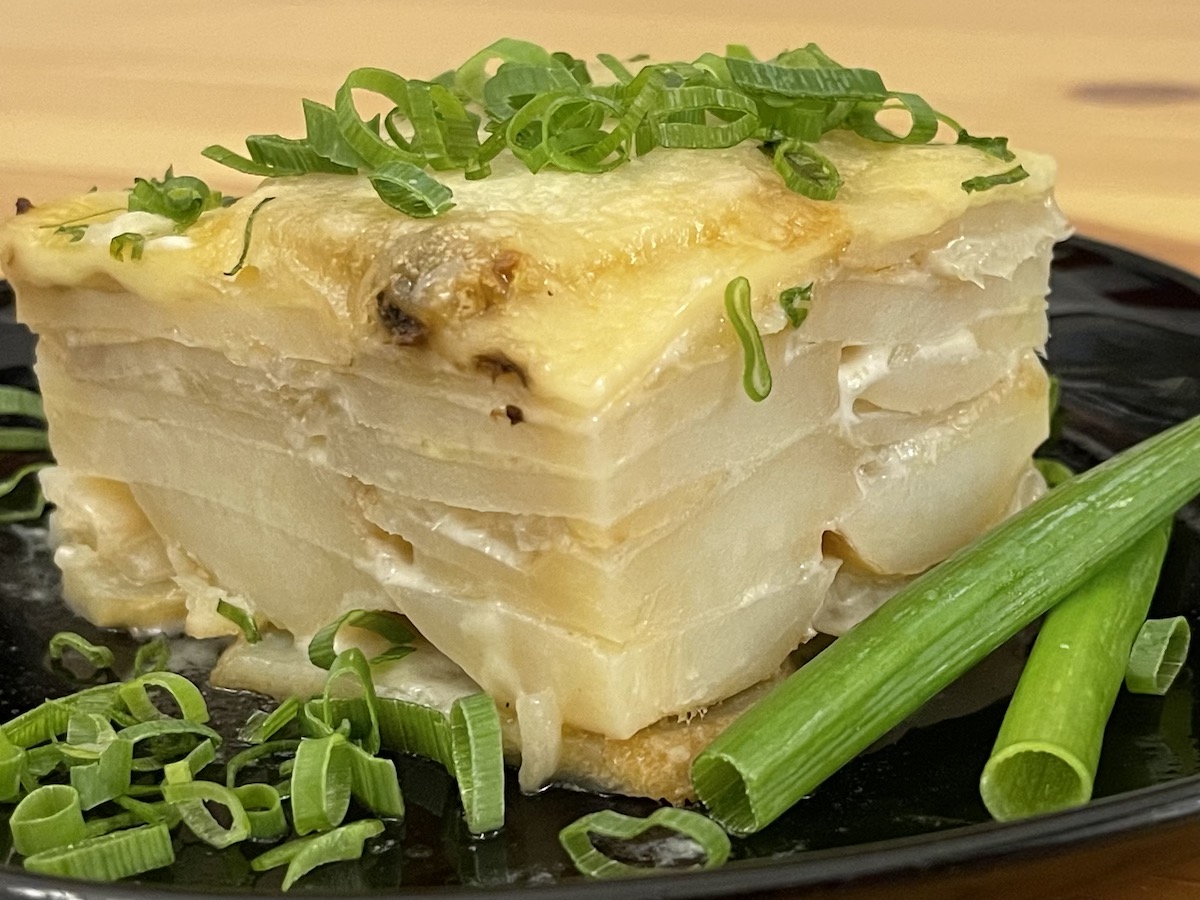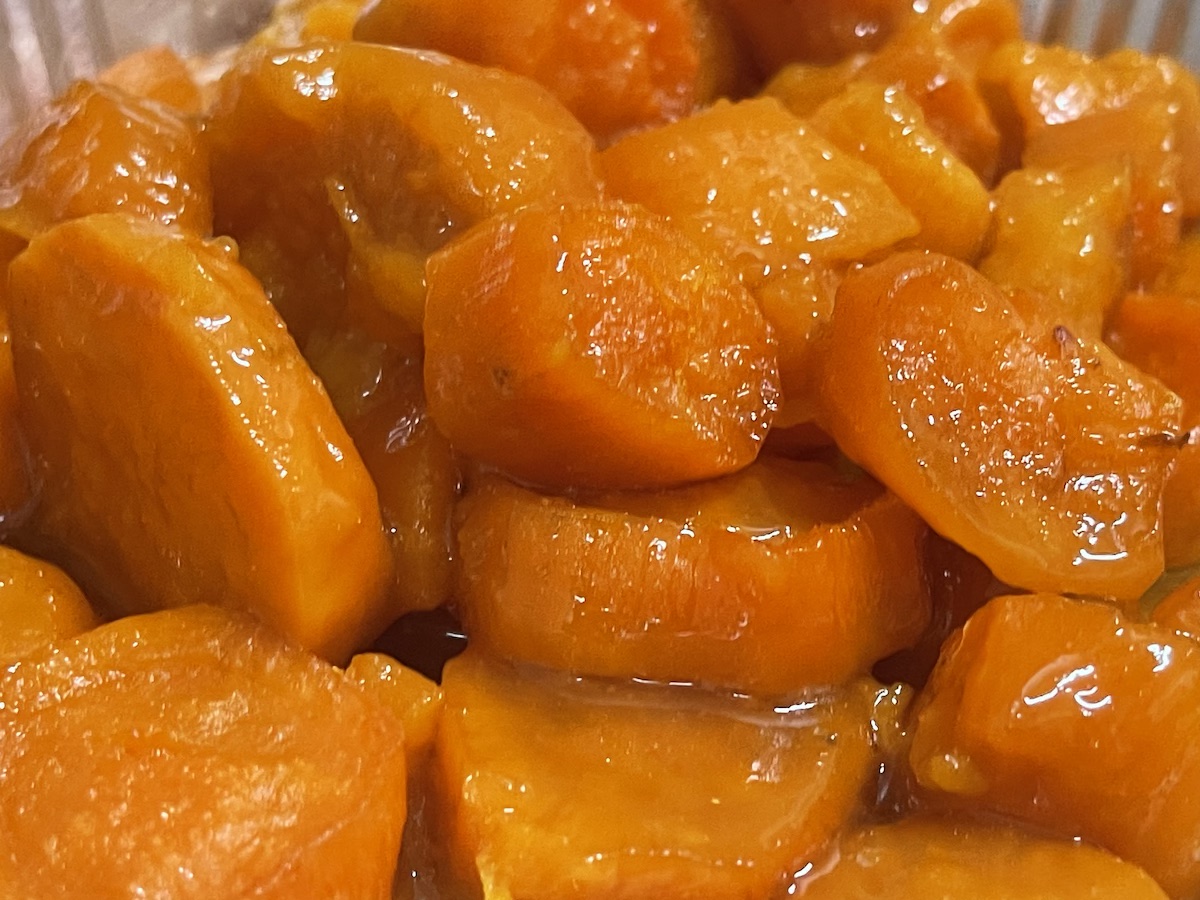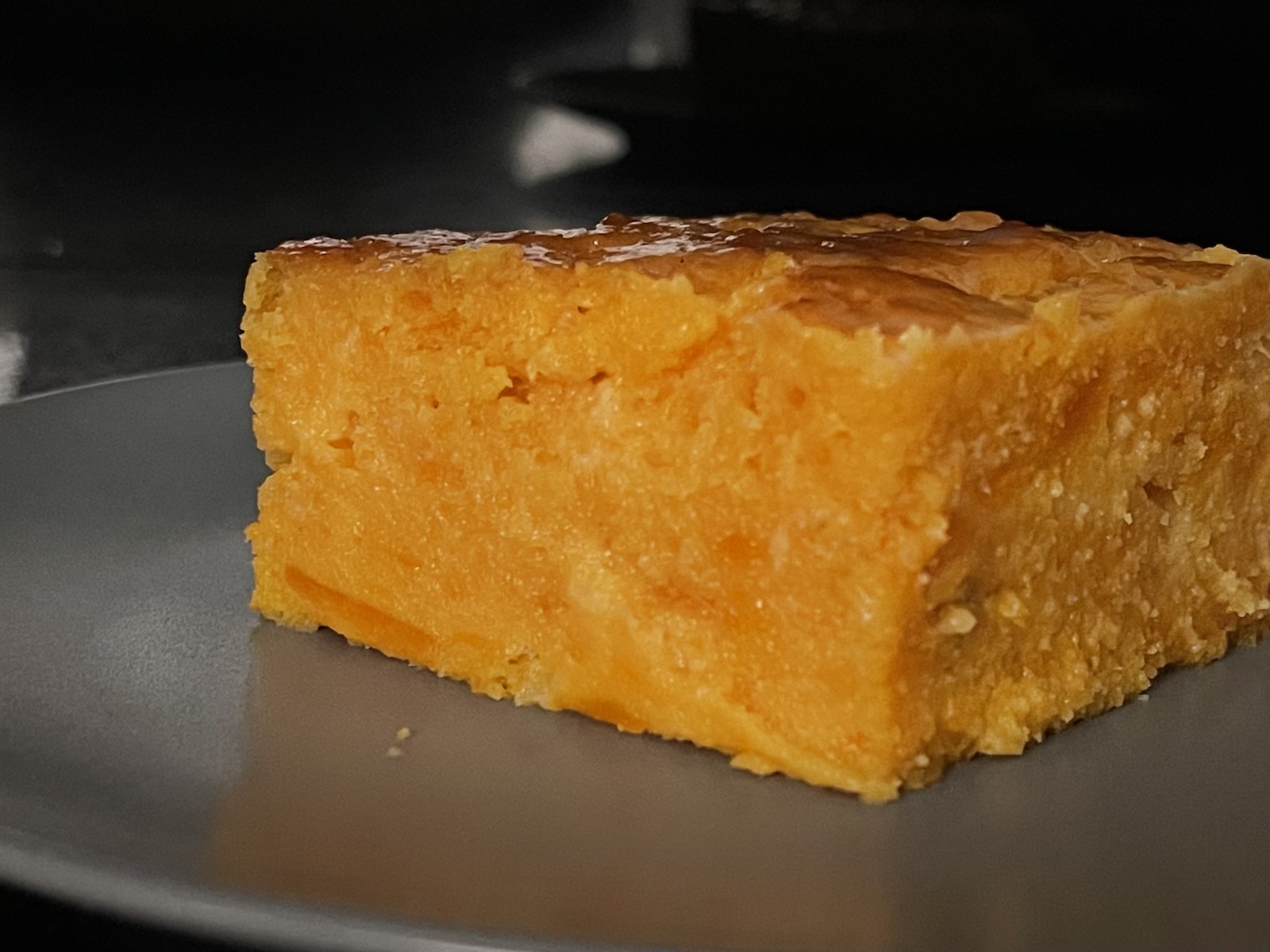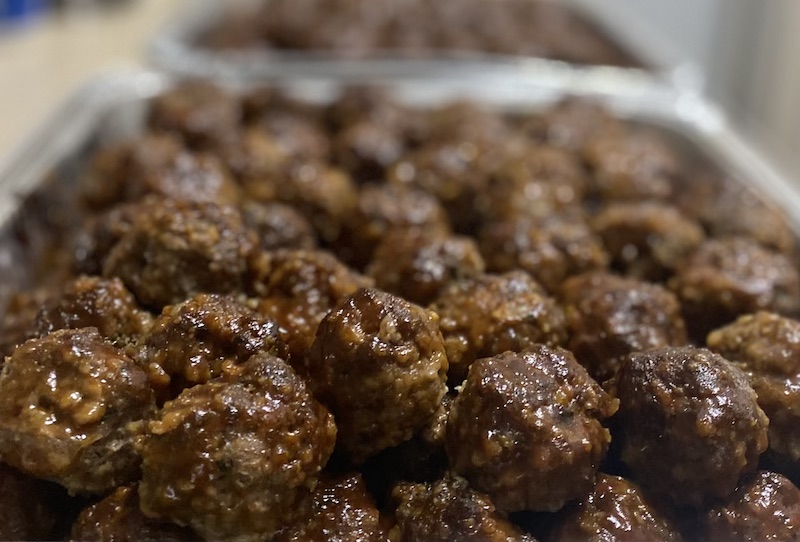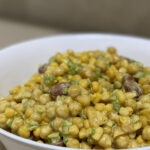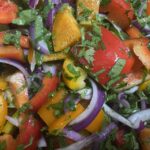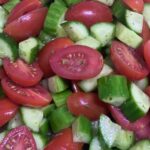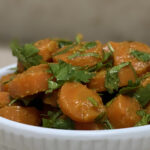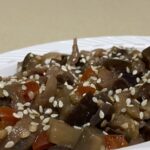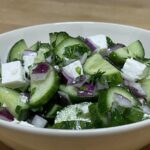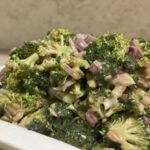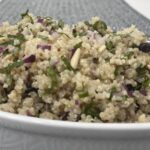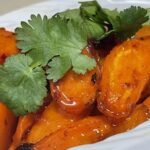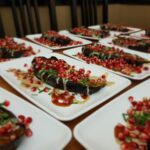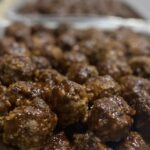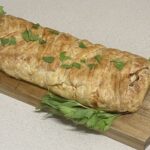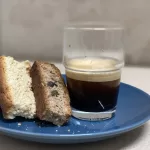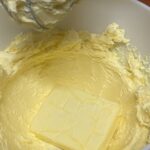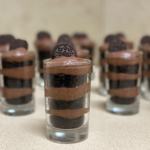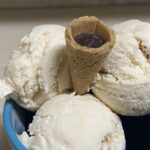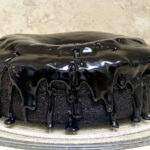Finally, at last the famous broccoli salad. This salad is a great addition to either a Shabbat meal or a “braai”. It’s just a few simple ingredients and is so basic and easy to make but it’s always a huge hit.
Cut the broccoli down into bite sized pieces. Dice your onion into small pieces. We prefer red onions. It adds a bit of colour and tastes a bit sweeter.
Mix the broccoli and onions together.
Mix the ingredients for the dressing together to taste. Allow the sugar to dissolve into the mayonnaise and vinegar before dressing the salad.
We normally taste the dressing as we go along to make sure that it is sweet and acidic enough and of course that there is enough to cover all of the broccoli.
In a frying pan toast your sunflower seeds. Make sure that you keep a close eye on the sunflower seeds as not to burn them. They are very sneaky, one moment they are still happily toasting away and the next moment they are burned. Please note that sometimes they continue to roast even after you have taken it off the heat. So then it is best to immediately transfer them into a bowl to cool down instead of keeping them in the pan where they might burn. You can skip this step but when you toast the seeds it enhances the flavour.
Once the sugar in the dressing has dissolved you can mix it together with the broccoli and onions.
The sunflower seeds we add to the salad just before we want to serve it, this way they still have their crunchy texture.
We have also added cranberries to this salad on occasion to mix things up a bit.



